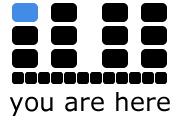Considering the Mattering of Metadata in the GIS Classroom
As a standard of documentation, metadata is currently somewhat of an afterthought in the undergraduate geographic information systems (GIS) classroom. GIS curriculum tends towards the conceptual and the technical, towards the application of cartographic theories like projection and generalization. As a result, students learn to work menu-systems from expensive and complicated software packages, while asked to recognize the conceptual underpinnings that transform three-dimensional Earth-space into two-dimensional map products. In this classroom, metadata documentation becomes taught more as the best practice of a responsible GIScientist, and less as an explicit practice of mapping. As a result, metadata documentation practices become de-prioritized in the curriculum, as the technical complexities absorb much of the attention. Metadata, it seems, doesn’t matter much in the classroom.
“Standards in the Making” (SITM) articulates a different approach to metadata practices. As we understand it, SITM foregrounds the affordances and constraints of making media as scholarship. Within mapmaking practices, treating metadata documentation as emergent problematizes the work of standardization in geographic information processing. As in many GIS textbooks, the spatial data standard is foundational to geographic information handling:
Data standards facilitate a common understanding of the components of a spatial data set, how data were developed, and the utility and limitations of these data. (Bolstad, 2008, p. 511)
It is towards this “common understanding” that standards possess strength. What would it mean if these “common understandings” resulted from the flexibility of standards as they are produced? That is, if knowledge resulted not from the stabilizations of measure, form and method, but from the multiple and potentially incongruous acts of stabilizing.
SITM seems in direct contrast to the National Spatial Data Infrastructure, created in 1994 by President Clinton:
Among the many concepts introduced in the report was that of patchwork, the notion that national mapping agencies should no longer attempt to provide uniform coverage of the entire extent of the country, but instead should provide the standards and protocols under which numerous groups and individuals might create a composite coverage that would vary in scale and currency depending on need. (Goodchild, 2007, p. 217)
Instead, SITM devolves the creation of protocols and standards used to produce data to those making the medium. Within the classroom, this approach might afford the students a better appreciation for the importance of metadata—as it has currently been reduced to the latter stages of a GIS project, as time and funding permits.
This is similar to the approach of qualitative GIS that seeks to open the process of systematization to inquiry, where, as I’ve previously described, “the question of what becomes fixed, when, and by whom, is a site of contestation” (Wilson, 2009, p. 164). Distinct from a “patchwork” approach described by Goodchild above, qualitative GIS seems to focus on the production of systematicity which results from the fixing of images to database entries. Instead of geographic information patches that are stitched together by their stabilized standardization, qualitative GIS and SITM demand the explicit consideration of their suturing, to make the standardizing of metadata documentation co-present to mapmaking practices.
